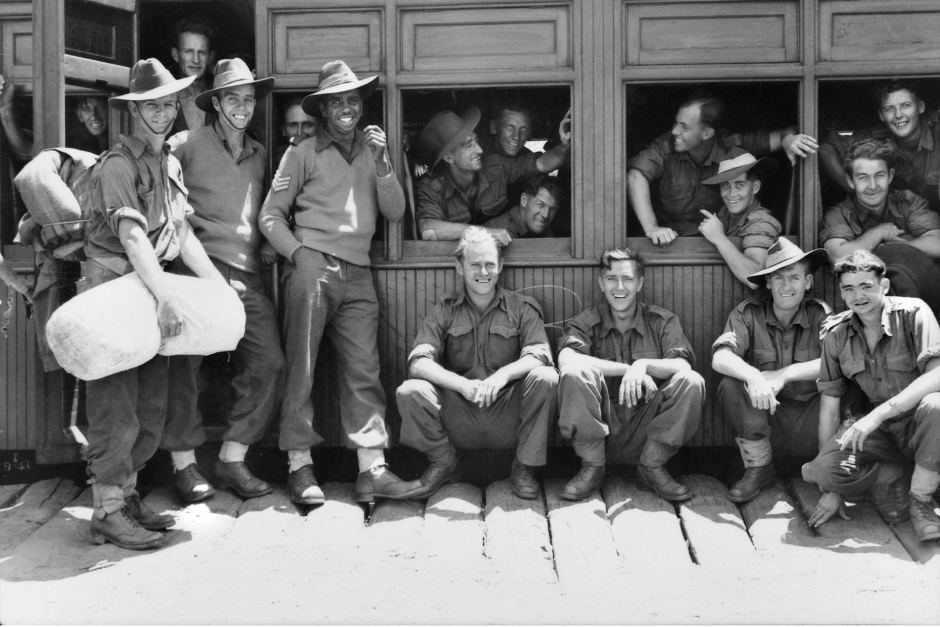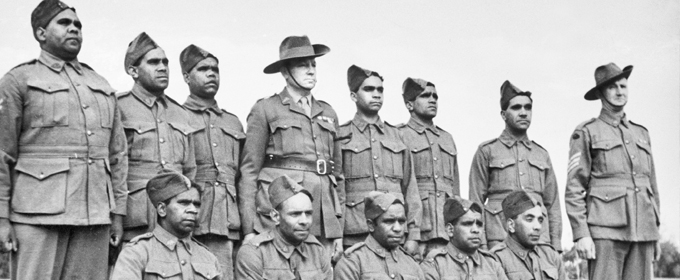We acknowledge all our people who fought for their Country against invasion and colonisation and those who have fought overseas. We acknowledge those who lost their lives.
About ANZAC Day
To commemorate ANZAC Day on 25 April, this article provides an overview of Aboriginal and Torres Strait Islander involvement in the armed forces and reflects on key themes and legacies of that involvement. ANZAC stands for the Australian and New Zealand Army Corps. ANZAC day is held each year on 25 April. This date marks the anniversary of the first military action fought by Australia and New Zealand, at Gallipoli (Turkey) during World War 1 in 1915. ANZAC day was first celebrated in 1916. Over the years, the rituals and observances held each ANZAC day have developed into what they are today – including the dawn service, marches, memorials and more. The day has also become a commemoration of all wars Australia has participated in and a time to reflect on war and its legacy.
Recognising the profound contribution Aboriginal and Torres Strait Islander people have made to Australia. Produced for the Recognise campaign appearing on the ABC.
Aboriginal Service People
Military service and war is a significant part of our mob’s history and current experience. Aboriginal and Torres Strait Islander people have served in large numbers in every conflict since Australia’s Federation in 1901 and some signed up to colonial forces before this.
It is hard to know the exact number of Aboriginal and Torres Strait Islander service people because the Australian Defence Force did not record the cultural background of members until recently. In the early 1900s Aboriginal and Torres Strait Islander people were not legally able to join the Army, so many hid their identity in order to sign up.
More recently, many families, Community-members and organisations have been working to bring to light the stories, contributions and experiences of Aboriginal and Torres Strait Islander service people. We now know that:
- A number of Aboriginal and Torres Strait Islander people served in the Boer War (1899-1902)
- Over 1000 Aboriginal and Torres Strait Islander people served in World War I (1914-1918) and around 70 fought at Gallipoli
- At least 3000 Aboriginal and 850 Torres Strait Islander people served in World War II (1939-1945)
- In both World Wars, Aboriginal and Torres Strait Islander people had the highest participation rates in the military as a proportion of their population in Australia
- Aboriginal and Torres Strait Islander people have participated in all military conflicts since the World Wars, including in Vietnam, Iraq and Afghanistan and in peacekeeping operations including in Somalia and East Timor
- In 2011 Aboriginal and Torres Strait Islander people made up 1.7% of the Australian Army.[1]
Aboriginal and Torres Strait Islander people have also been involved in work at home to support the war effort. For example, during World War II, entire Aboriginal communities in Northern Australia did defence work such as construction, farming and butchery for the army.
There have also been Aboriginal and Torres Strait Islander units. During World War II, the Torres Strait Light Infantry was started to patrol the Torres Strait Islands and support ships going through their waterways. At the same time the Northern Territory Special Reconnaissance Unit was formed. This unit was made up of Yolngu men from Arnhem Land and aimed to use Aboriginal tactics and weaponry to fight the Japanese military. In 1981, the NorthWest Mobile Force or NORFORCE was created in the Northern Territory. This unit continues today and has 60% Aboriginal membership.
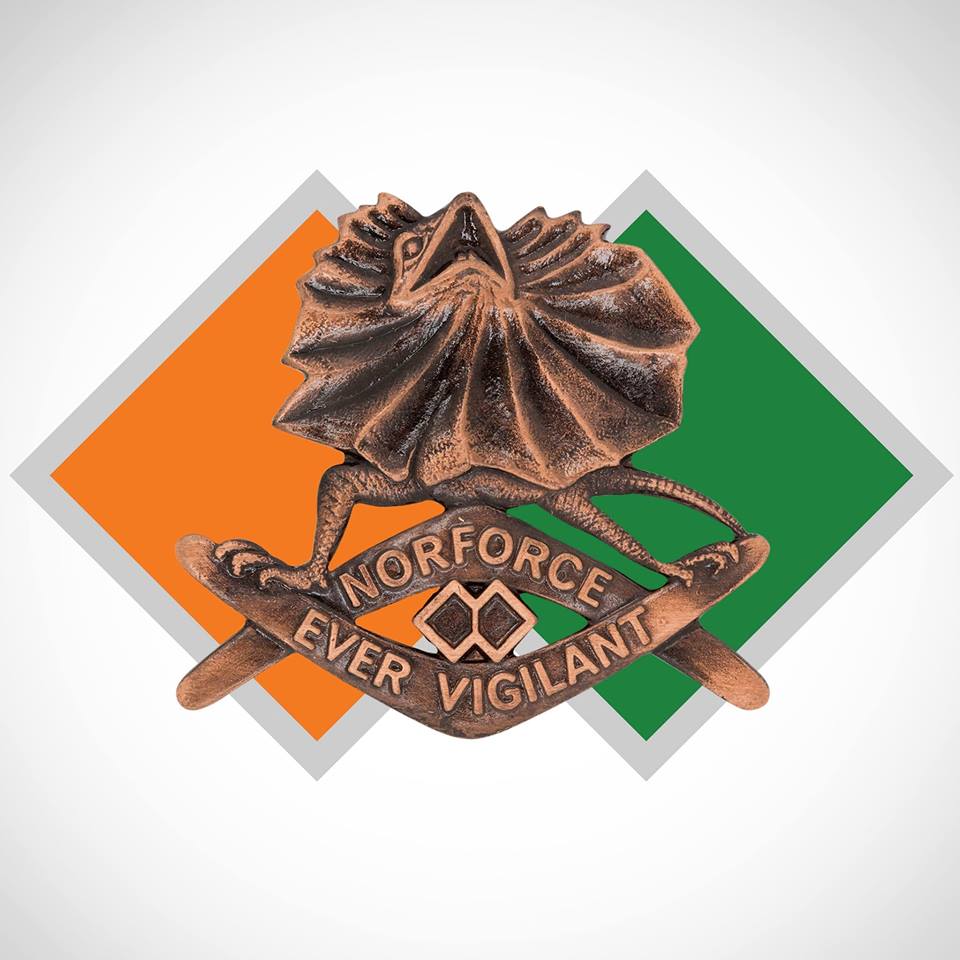 Link: Deadlystory NORFORCE Article
Link: Deadlystory NORFORCE Article
[1] Sources: Australian War Memorial, Reconciliation Australia 2015, N Riseman 2013: Australian Army Journal. Please see resources section to access these documents.
Aboriginal Veterans
The links below are a collection of stories of Aboriginal war veterans.
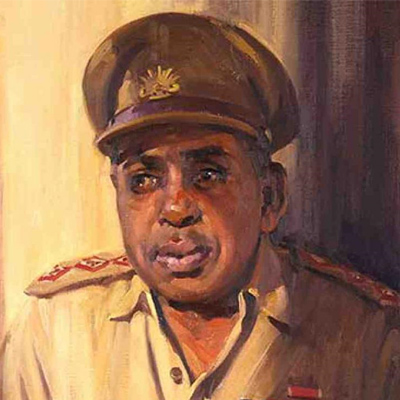 Reginald Walter Saunders was the first Aboriginal to be commissioned as an officer.
Reginald Walter Saunders was the first Aboriginal to be commissioned as an officer.
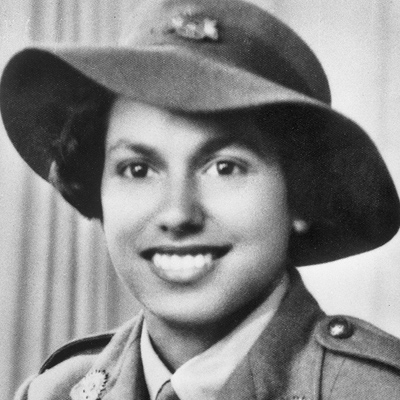 Oodgeroo Noonuccal was an Aboriginal rights activist, poet, veteran, environmentalist and educator.
Oodgeroo Noonuccal was an Aboriginal rights activist, poet, veteran, environmentalist and educator.
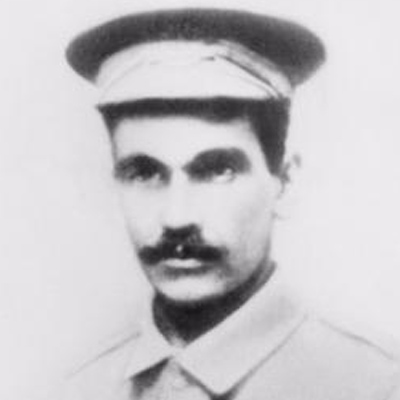 Harry Thorpe served as an infantryman in World War I and was awarded a medal for his bravery.
Harry Thorpe served as an infantryman in World War I and was awarded a medal for his bravery.
 Marion Smith was the only Aboriginal woman known to have served in World War I.
Marion Smith was the only Aboriginal woman known to have served in World War I.
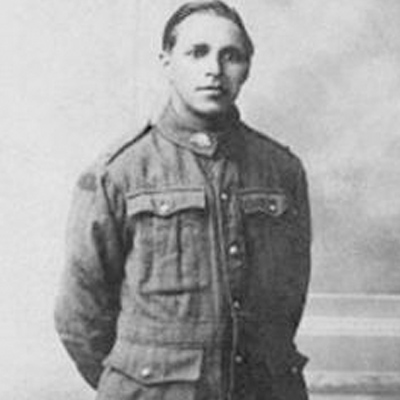 The Lovett Brothers and their family have made significant contributions to the Australian military.
The Lovett Brothers and their family have made significant contributions to the Australian military.

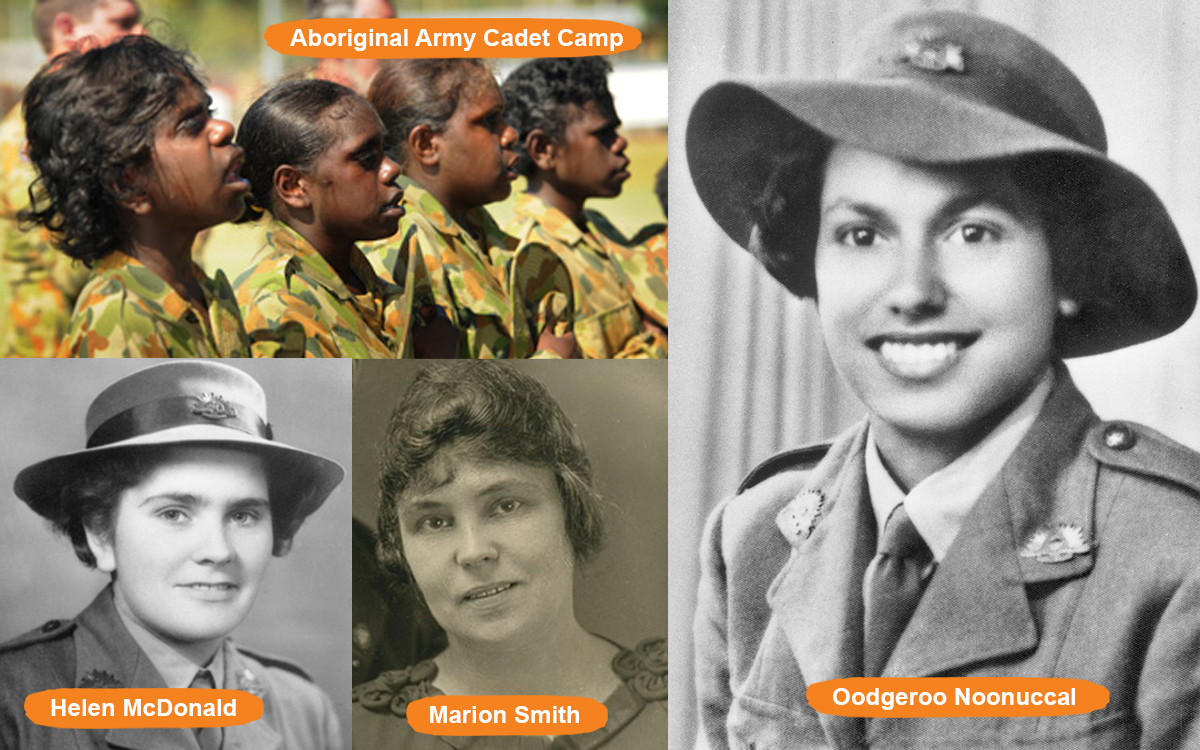
Aboriginal women have and continue to make an important contribution to Australia's defence forces. Their roles ranging from fighting on the front lines to working support roles behind the scenes.
Barriers to Enlisting
Our mob fought in large numbers during the World Wars, despite the fact that they were legally barred from serving. Laws at the time meant that people “not substantially of European origin or decent” were not allowed to serve in the military. Those who could hide their Aboriginality, claim descent from another culture or who had sympathetic medical or other staff approve their registration were able to sign up regardless. Some people who were rejected from the army in one place travelled elsewhere to try and sign up again. At times during both wars, these restrictions were relaxed to fill the need for more soldiers. Restrictions on enrolment in the armed forces based on race were removed in 1949.
Reasons for Going to War
Reasons to go to war for Aboriginal and Torres Strait Islander people were complex and were vastly different from person to person. During the World Wars, there were also discriminatory barriers that prevented our mob from enlisting. So why go to war?
A strong motivator for many was the promise of fair treatment and equality whilst in the armed forces. Aboriginal and Torres Strait Islander people faced racism, colonisation and discrimination on a daily basis in Australia. However, once in the armed forces, Aboriginal and Torres Strait Islander people were often treated the same as their non-Indigenous counterparts, lived in the same conditions and were paid the same amount. While racism still existed in the armed forces, many Aboriginal and Torres Strait Islander soldiers have said they were treated better while in the military. In World War II, many Aboriginal and Torres Strait Islander service people were also promised full citizenship rights on their return.
Aboriginal and Torres Strait Islander people were also offered higher pay and better employment and education opportunities in the armed forced than in Australia. War also offered a sense of adventure and a chance to see the world.
"I joined the (Australian Women’s Army Service in World War II because) …it was also a good opportunity for an Aboriginal to further their education. In fact there were only two places where an Aboriginal could get an education, in jail or the Army and I didn’t fancy jail!" - Oodgeroo Noonuccal
It is important to recognise that many Community-members were against war and actively resisted violence and conflict. Uncle William Cooper was one leader who at the time of World War II strongly opposed fighting European wars when Aboriginal people were treated so poorly in Australia. He also led a protest against German treatment of Jewish people under the Nazi regime.
Promises of Change not Kept
After returning from war, having fought for their country and experienced equal treatment during their service, Aboriginal and Torres Strait Islander people found the same and in some cases worse discrimination, colonisation and injustice as when they’d left. Not only that, many Aboriginal and Torres Strait Islander service people were not respected as veterans and did not have their contributions recognised.
One example of this happened after the Boer War, when Aboriginal men who had participated are believed to have been denied entry back home due to the immigration restrictions of the White Australia Policy.
After the World Wars, Aboriginal veterans received little public recognition or support. They were denied access to schemes that provided returning soldiers with land and job opportunities. For example, the Soldier Settlement Scheme aimed to give land and work to returning soldiers. This involved splitting up large rural estates into smaller farming blocks and leasing them to returned service-people. However Aboriginal soldiers were denied access to this scheme. In some cases Aboriginal land was divided under this scheme and then was granted to non-Aboriginal soldiers. Communities are still fighting to have this redressed.
Other experiences of Aboriginal and Torres Strait Islander service people included having their income and pensions quarantined and having military funerals, participation in ANZAC marches and access to Returned and Service League (RSL) clubs denied.
Some of these struggles for recognition still continue. This was shown recently in Alice Springs, with Aboriginal Community-members fighting to have the Aboriginal flag flown at ANZAC Hill for the first time in 2018.
Recognising and commemorating the contributions of Aboriginal and Torres Strait Islander soldiers. More states across the country are building memorials to honor the sacrifices made by these men and women.
What we Remember
Aboriginal and Torres Strait Islander service people have faced profound injustices. Recently, through the tireless work of families of service people and others, there has been more recognition of the contributions and bravery of Aboriginal and Torres Strait Islander people in the military. The first memorial for Aboriginal soldiers was unveiled in Adelaide in 2013. There are also memorials in Warrnambool and Mildura in Victoria.
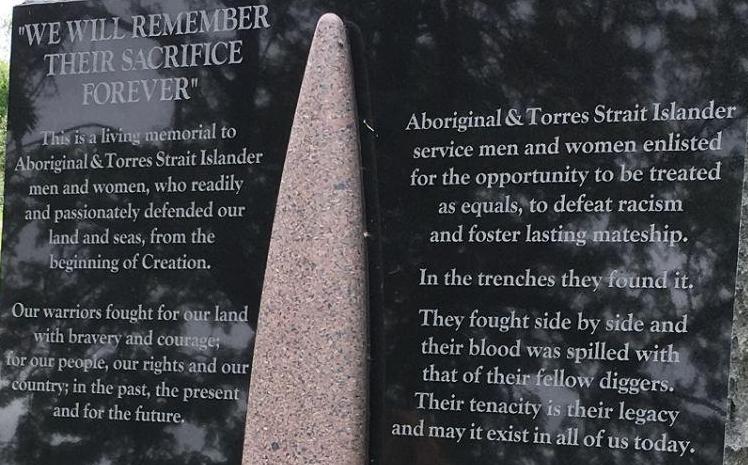 Mildura Aboriginal War Memorial
Mildura Aboriginal War Memorial
It is important that Aboriginal and Torres Strait Islander service people are recognised. However, while soldiers who fought in international conflicts are more likely to be remembered and respected, some wars are not afforded the same status.
Aboriginal fighters against colonial invasion and dispossession are rarely recognised in Australia and frontier violence is rarely recognised as a ‘war.’ The reasons for this are complicated, but reflect a pattern of denial of Australia’s history.
Deadly Story will be releasing articles that explore frontier conflict and resistance in more detail in the future.
Legacy
The legacy of military service for Aboriginal and Torres Strait Islander people in Australia is a complex part of many families’ history and current reality. Communities throughout the country have felt the loss of loved ones who did not come home or those who have had to grapple with post-traumatic stress disorder and discrimination back in Australia. It is important that the stories, contributions and bravery of our service people are recognised and respected.
Victorian Aboriginal Memorial Sites
Dedicated to those who fought and died in the service of their country.
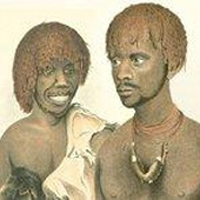 Memorial for Tunnerminnerwait and Maulboyheenner
Memorial for Tunnerminnerwait and Maulboyheenner
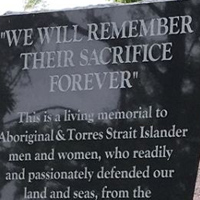 Mildura Aboriginal War Memorial
Mildura Aboriginal War Memorial
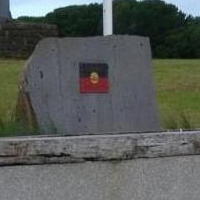 Warrnambool Aboriginal Service Memorial
Warrnambool Aboriginal Service Memorial
Resources
- Australian War Memorial, Indigenous Defence Service
- Michael Bell, Aboriginal presence on Gallipoli grows, Australian War Memorial
- Australian War Memorial, Aboriginal service during the First World War
- AIATSIS project, Serving Their Country
- Aboriginal and Torres Strait Islander Veterans and Service Association
- N Riseman, Serving Their Country: A Short History of Aboriginal and Torres Strait Islander Service in the Australian Army, Australian Army Journal
- Reconciliation Australia, Let’s Talk: Recognising the Forgotten ANZACs
Articles
- Stan Grant, On Anzac Day, we need to recognise the role of Aboriginal diggers, ABC News
- BBC, World War One's forgotten Anzacs: The Indigenous Army
- NITV, Remembering Albert Leane: the Indigenous serviceman who fought at the Battle of Fromelles 100 years ago and survived
- NITV, The fascinating life of WWI’s only serving Indigenous woman, Marion Leane Smith
- Celeste Liddle, We must remember Indigenous warriors who fought war itself
- Blake Foden, Aboriginal Tent Embassy camp shines light on frontier wars, The Sydney Morning Herald
- Louise Nunn, Anzac Day play to tell World War 1 story of Aboriginal digger, The Advertiser
- Irena Ceranic, Maori and Aboriginal dancers join forces to perform together at Anzac Day commemorations in Perth, ABC News
- Madeline Hayman-Reber, The Black War: Tasmania still torn by its history, NITV
- Leah Roberts, Picture book recognises role of indigenous Diggers in World War I, Fremantle Gazette
- Grayson McCarthy-Grogan, Black ANZAC: a documentary shining a light on Indigenous service in Australia's war history, NITV
- Kristyn Harman, Clarrie Combo, Mrs Brown and Aboriginal soldiers in WW2, The Conversation
- Ali MC, Uncle Graham Atkinson, Aboriginal Vietnam Veteran, NITV
- Tony Wright, How Anzac mother's dream was dashed, The Age
- Anzac Day marked with Frontier Wars protest and Black Diggers March, NITV
- Nakari Thorpe, Indigenous service women honoured in Canberra's Anzac ceremony, NITV
- Ella Archibald-Binge, Indigenous Vietnam vets from secret unit reunite after 45 years, NITV
- Damien Peck, Anzac Day 2018: Remembering Daniel Hodgekiss 100 years after the battle at Villers Bretonneux, ABC News
-
Under The Kaiser's Crescent Moon
Two Indigenous Australians spent the last year of the Great War at an unlikely prisoner-of-war camp in Germany... This has been republished with permission by the author Aaron Pegram.Download

